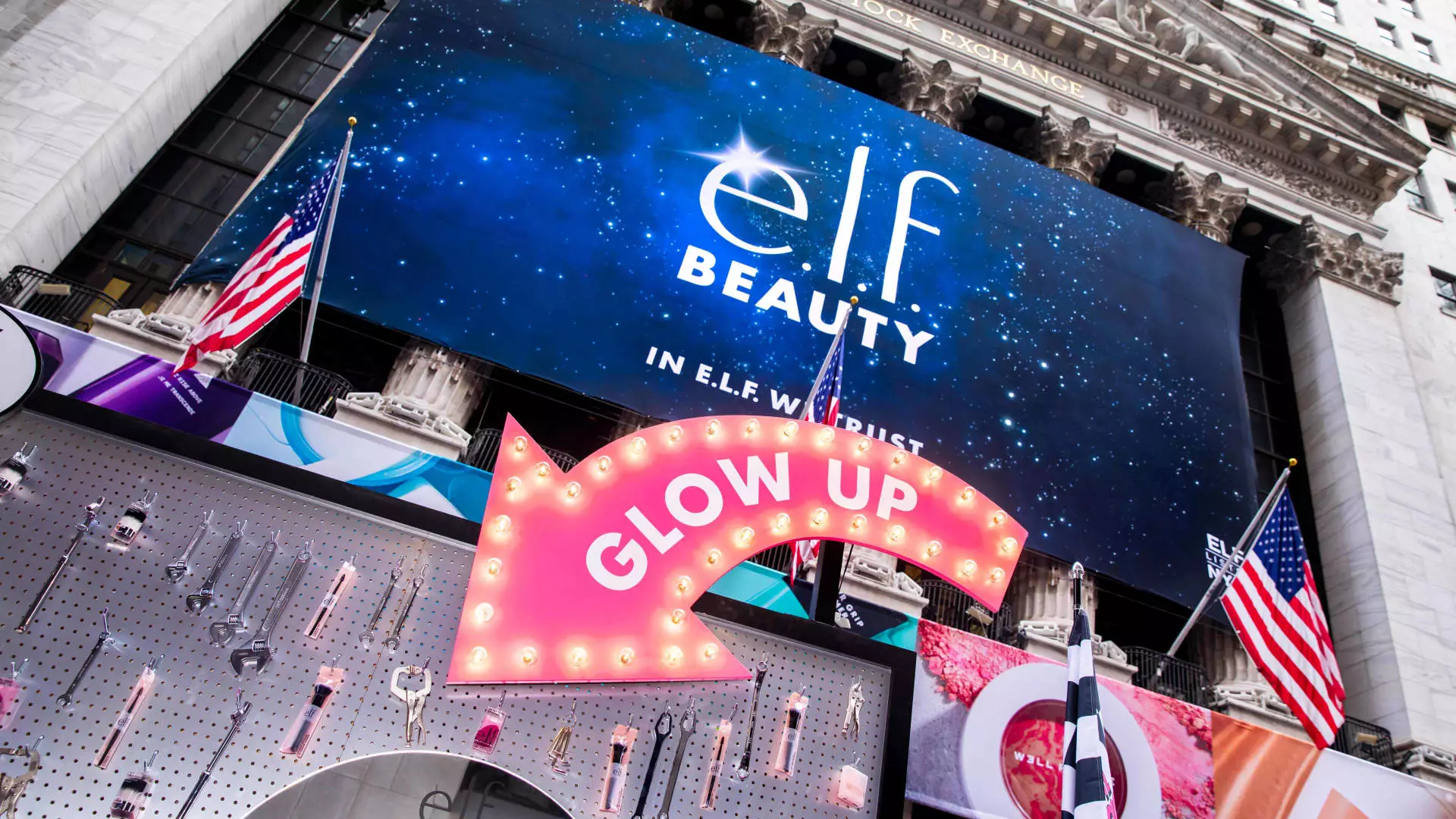The recent economic landscape has posed significant challenges and opportunities for companies like E.l.f. Beauty, a cosmetics manufacturer that relies heavily on production in China. As the company’s CEO Tarang Amin articulated in a recent interview with CNBC, the implementation of a new 10% tariff on Chinese imports has sparked relief, albeit cautiously. This stems from the previous threat of tariffs that peaked at 60%, which would have had a devastating effect on pricing, profitability, and supply chain dynamics. The presence of tariffs is a growing concern that not only affects companies directly reliant on Chinese manufacturing but also shapes strategic decisions related to pricing and supply chain management.
The ongoing trade tensions between the U.S. and China have been a significant backdrop to Amin’s remarks. Following a history of aggressive tariff negotiations initiated during President Trump’s administration, many companies, including E.l.f. Beauty, find themselves navigating a complex web of regulatory changes and retaliatory measures. With China retaliating against U.S. tariffs by blacklisting certain American companies, businesses operating across these borders are left in a precarious position, weighing the impacts of these geopolitical dynamics on their operational costs and consumer pricing strategies.
E.l.f. Beauty’s CEO highlighted the company’s proactive approach in adapting to these challenges by reducing its reliance on Chinese manufacturing from nearly 100% to about 80%. This is a strategic maneuver that shows forward-thinking amid uncertainties in trade policies. Such a reduction demonstrates an awareness that global supply chains cannot solely hinge on one geographic region, especially one that has proven volatile. This diversification allows the company more leverage in negotiations, potentially shielding it from the worst effects of tariff increases and enabling it to pivot quickly when market conditions change.
However, transitioning away from a highly centralized production model requires significant investment and planning. It is important to consider whether E.l.f. has sufficiently diversified its supply chain to mitigate risks associated with other regions. Furthermore, while the reduction in reliance on China is a positive step, the company must ensure that quality and cost-effectiveness are maintained, given their known position in the market as an affordable cosmetics brand.
In response to the evolving tariff environment, Amin noted that E.l.f. Beauty is still contemplating whether price increases will be necessary for its products. This reflects an important consideration within the cosmetics industry, where consumer price sensitivity can significantly impact demand. Historically, when confronted with previous tariffs, E.l.f. raised prices on a third of its products, which led to a favorable response from consumers. This is noteworthy as it reveals a potential elasticity in consumer demand, positioning E.l.f. such that they can maintain market share even with modest price increases.
There is a delicate balance between maintaining affordability and ensuring profitability. The broader challenge for E.l.f. is projecting future costs accurately and adjusting its pricing strategy without alienating its customer base. Consumer trends indicate a growing preference for value over luxury, particularly amid economic uncertainty. Therefore, any increase in prices must be cautiously evaluated against the risk of consumers opting for more affordable alternatives.
A Forward-Looking Perspective
Moving forward, the comments from Amin suggest that E.l.f. Beauty is prepared to adapt and respond to a range of scenarios as the economic environment evolves. Their foresight in managing inventory and supply chain logistics is crucial for navigating the challenges posed by tariffs and international trade. With a slight delay before the full impact of potential tariffs is felt in their fiscal projections (not until well into fiscal year 2026), time is on their side to craft a robust strategy.
This ongoing uncertainty presents E.l.f. Beauty with unique opportunities to innovate and diversify further, ensuring resilience against tariffs and other market disruptions. As they continue to adapt, the effectiveness of their strategies will ultimately be tested not only in terms of financial performance but also in consumer loyalty and brand positioning in an increasingly competitive marketplace.

